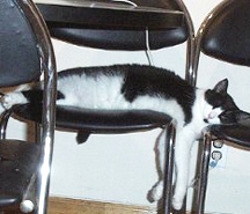The automobile wasn’t invented because someone wanted a new means of travel. It was because someone was tired of walking.
The recording device wasn’t invented because someone wanted a technology that could capture sound. It was because someone was tired of taking notes in class.
Are these statements true? Oh, I’d guess there is a shred of truth in them somewhere. But what is true is that automation-through-technology can lead to laziness and when the church service is in full swing, you shouldn’t look like our friend the sleeping cat pictured at the top left.
Most of us would quickly deny being lazy behind the mixer. But, looking at this age of technology and what the future holds, audio production technology has reached a point where it does allow you the ability to be lazy, specifically through the use of recall-able mix scenes.
There are three scenarios in which your digital mixer can lead to laziness.
Scenario 1:
This one is tempting when you have the same people in the band every week. You create one scene and label it “music” and use it for every song, every week, every month; no EQ adjustments, no effects changes, maybe a volume tweak here or there.
Result:
You’re mixing just as lazy as when you had an analog mixer and rarely touched the EQ knobs. Congratulations, all of your songs have the same generic sound. You might say I’m hyper-sensitive to this form of live mixing. You’d be right.
Scenario 2:
You create a good baseline mix for the first service with the mindset you will improve your mixes (saving the scenes) through your multiple services so the last service will sound the best. After all, you get the most people at the last service.
Result:
You’re doing a huge disservice to the congregation and missing the point of your job. You should have the first service sounding the best it can sound. The people attending this service are no less important than those attending the last service. Subsequently, if you’re doing this, you’ll start hearing comments like “the first service never sounds as good as the last service.” Is that what you want to hear?
Scenario 3:
During the worship practice / sound check, you spend your time creating great song mixes. You save each song as a digital scene so come service time you only have to recall the scene for the song.
Result:
Your service-time mix suffers because the acoustic properties of the room have changed because now the room is full of people. What sounded great in the empty sanctuary now only sounds so-so.
It’s better than being in scenario 1 or 2, but it’s still not where you should be.
The good news is you know the importance of distinct song mixes but you’ve allowed yourself to be lazy and miss out on sculpting those mixes into even better mixes for each service.
Not only do the room’s acoustic properties change when it’s full of people, but as I mentioned in another article, mixing for the moment and you can’t completely pre-mix for that moment.
Your mixing needs to be somewhat re-active to the congregation as the mood fits. But, I digress.





















